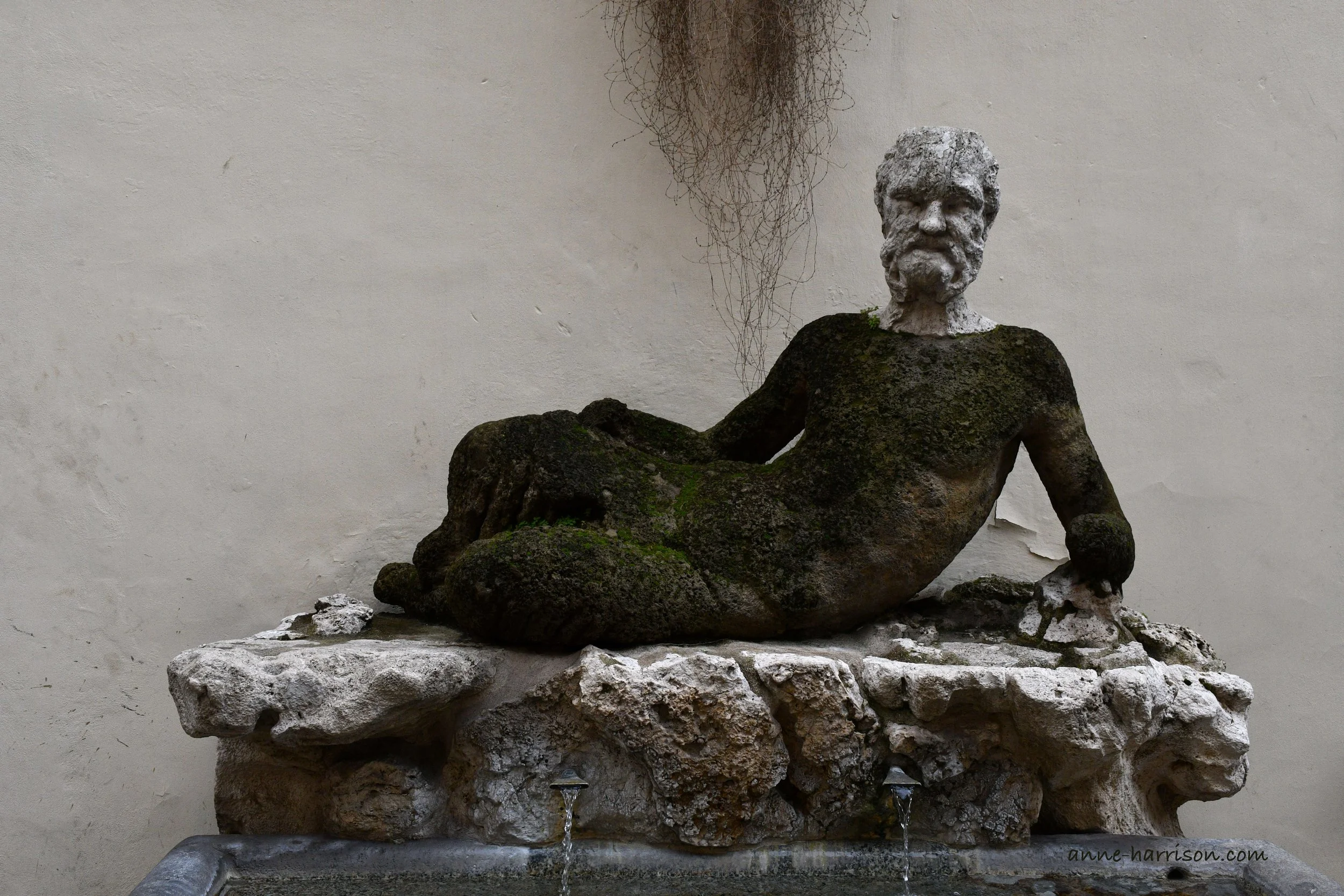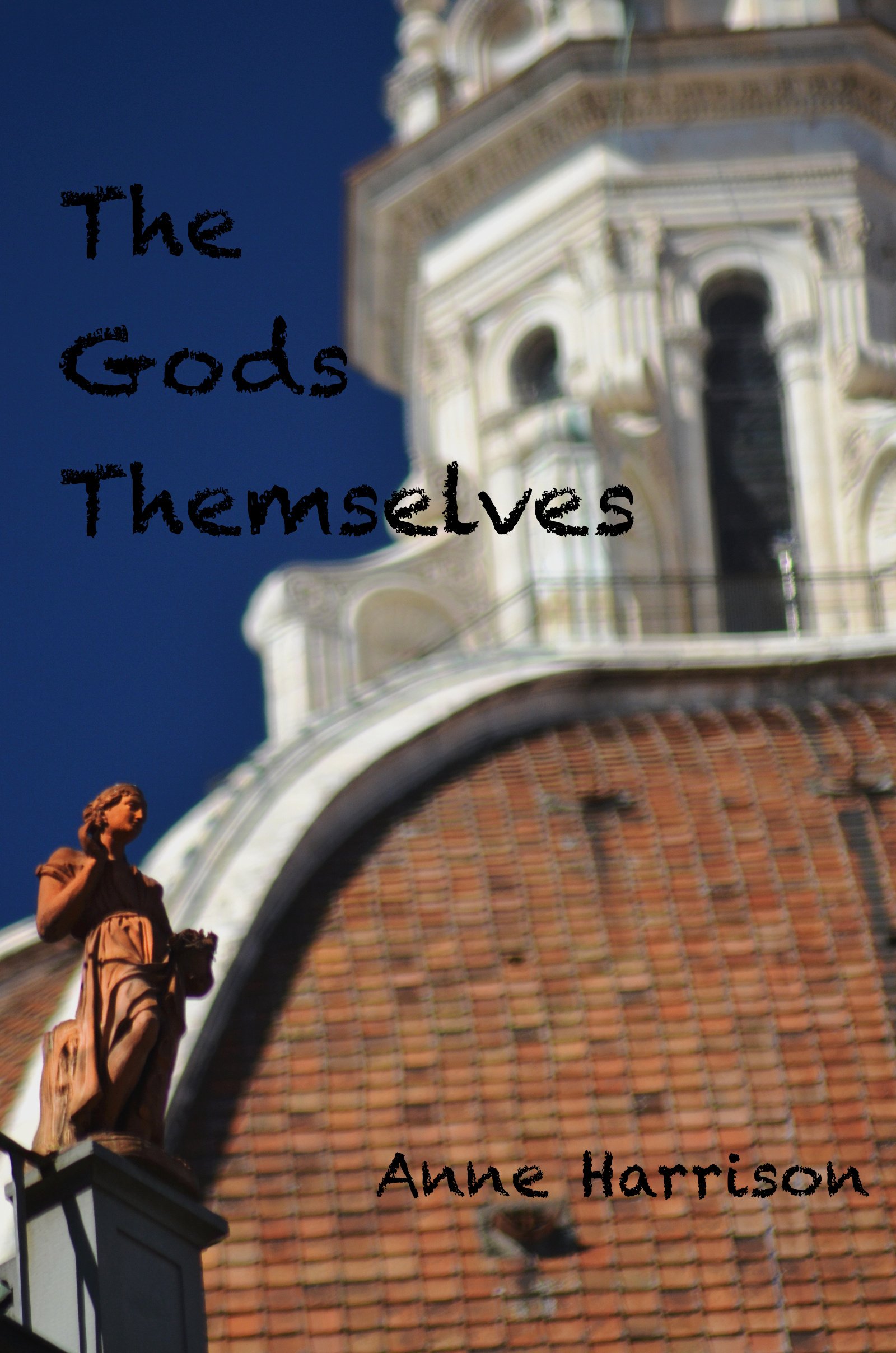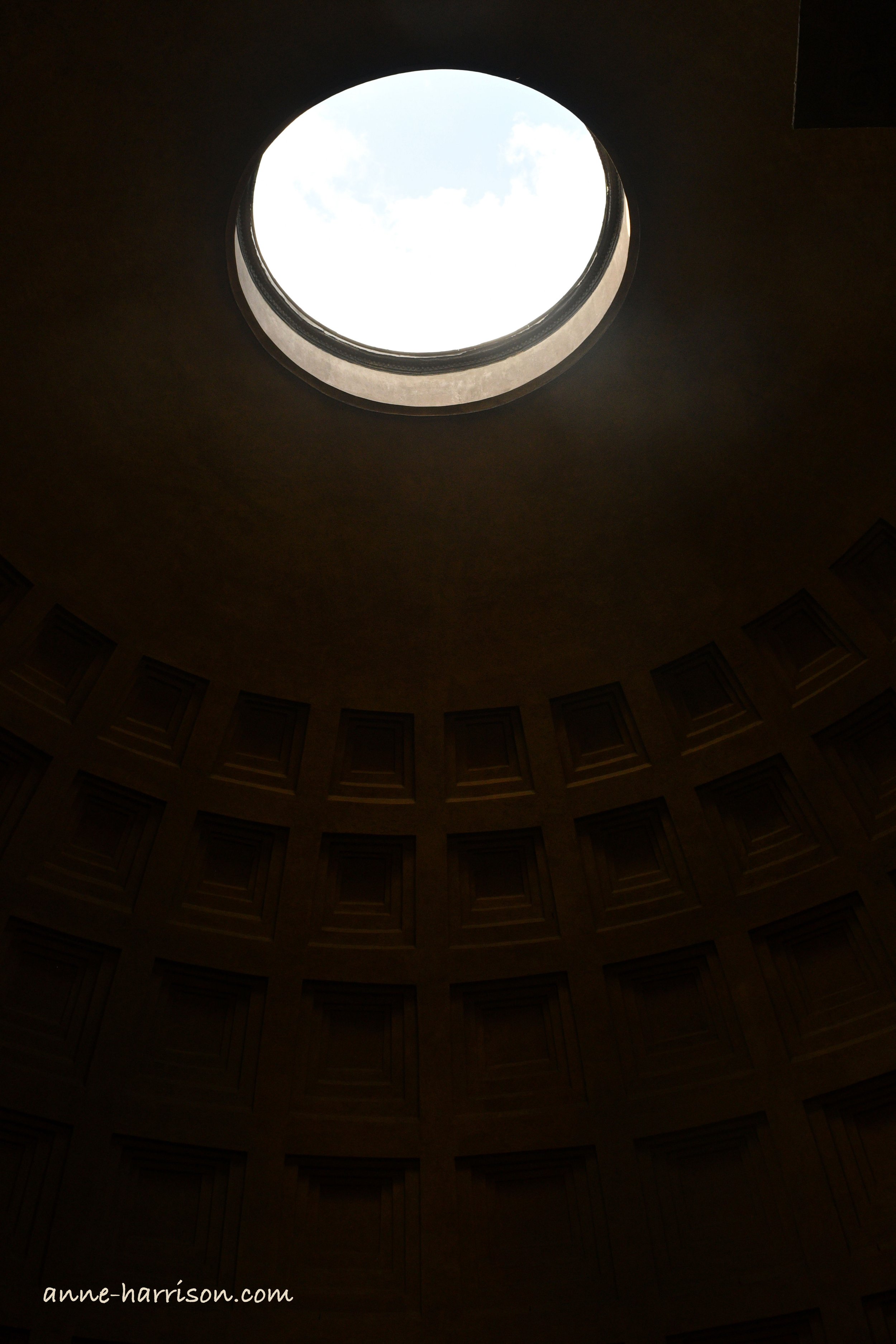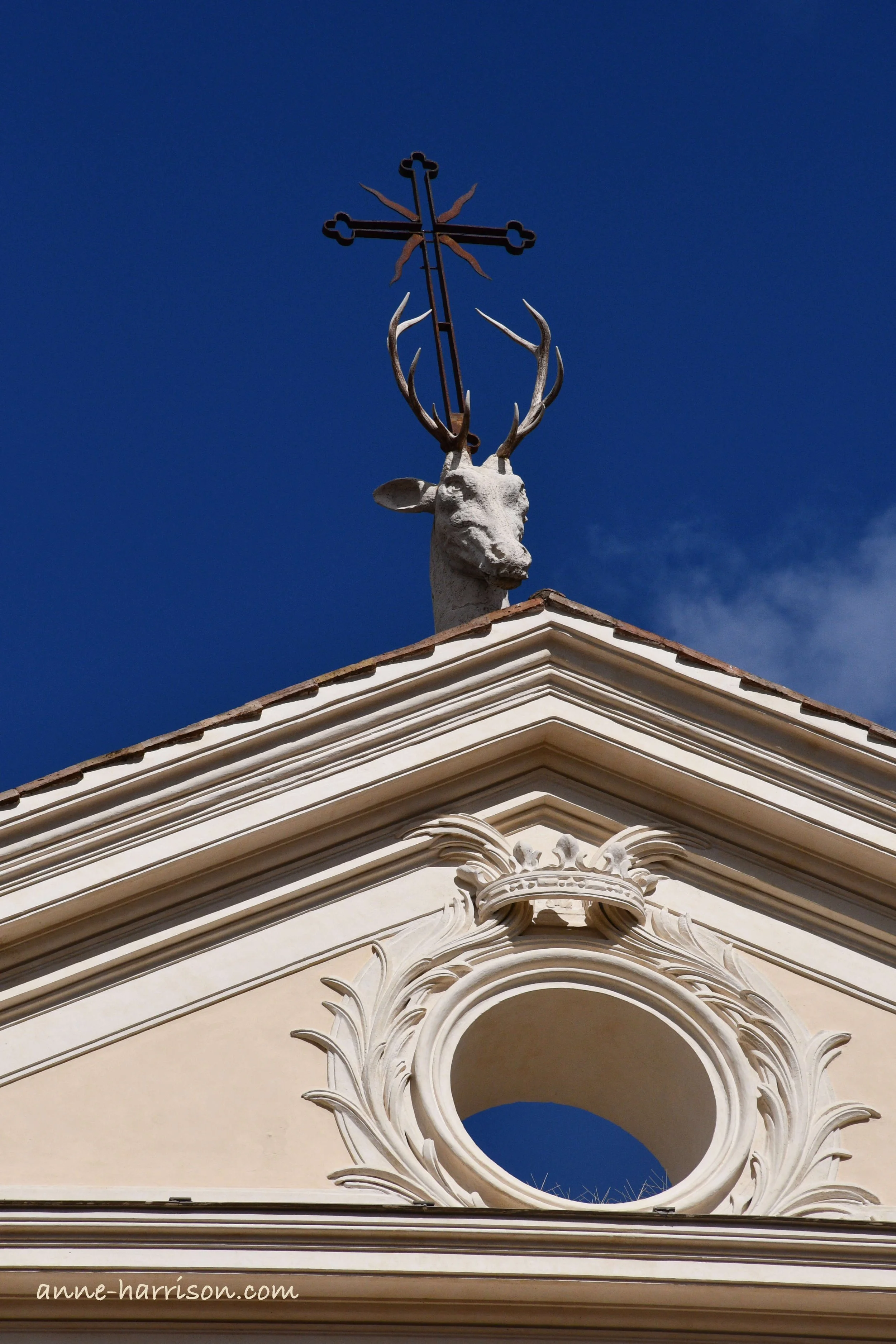Some Non-Touristy Ideas For Rome
So, the water in the famed Roman baths wasn’t always exactly clean… © A. Harrison
See the Rome of the Popes: The Leonine Wall
The Leonine Wall runs along the back streets from the Castel Sant’ Angelo to the Vatican, where the shops specialise in rosary beads and socks for a cardinal. The area is often empty, for most tourists approach St Peter’s along the statuesque (and rather prosaic) Via della Conciliazione. Like Florence’s Vasari Corridor, the Leonine Wall houses a secret passage—the Passetto di Borgo—which connects the Vatican to the Castel Sant’ Angelo. More than one pontiff has beaten a hasty retreat along this ‘passageway of the popes’. Il Passetto translates as ‘little steps’ – running in full papal garb could prove difficult, but would be well worth seeing.
The Castel Sant’ Angelo was built in the 2nd C by the Emperor Hadrian as a tomb for himself and his family, and Pope Leo IV added the Passetto di Borgo in 846 ACE after the Saracens sacked Rome. By medieval times the Castel had become a fortress; being the tallest building in Rome, it towered over the city walls.
After Rome’s sacking Pope Leo IV also began the Leonine Wall in 848 AD, enclosing the Leonine City, which included the Vatican and The Borgo. (Borgo is derived from the German burg, or town, for this was the place where the first pilgrims to visit St Peter’s stayed. By medieval times the numbers had swelled, forming a small town.)
Part of the Leonine Wall © A. Harrison
The Borgo, Rome
Of the three original gates in the Leonine Wall, only one remains: the southern Porta Santa Spirito. This was originally called the Posterula Saxonum, for by the 8th C ADE a great number of Anglo-Saxons pilgrims were visiting Rome. The Venerable Bede recorded how “Nobles and plebeians, men and women, warriors and artisans came from Britannia”.
Nearby is the church Santo Spirito in Sassia, built on the site of a church erected by King Ine of Wessex, and decorated with the most delightful frescoes. Around the corner is the Ospedale Santo Spirito, Rome’s oldest hospital and still functioning until 2000, when it became a convention centre. (Although the San Bartolomeo Hospital on the Isola Tiberina can trace it’s history to Roman times, an actual hospital was not built there until 1584.) The ruota degli esposti, or baby hatch where unwanted babies could be left anonymously, still remains.
During Renaissance times, artists such as Raphael and Michelangelo lived in the Borgo, as well as noblemen and high ranking church officials. In later times, the area became known for the selling of religious goods, and peopled by the likes of coronary (rosary makers), as well as the umbrella makers of the Vicolo degli Ombellari. Intriguingly, Rome’s executioner also lived here, forbidden by law to live on Rome’s left bank.
Unfortunately, much of the area’s character was lost when Mussolini and Pius IX, much like Hausmann in Paris, began a redevelopment project to open up the area and provide sweeping views of St Peter’s. The construction of the Via della Concillazione came at the cost of destroying many of those small alleyways and twisting streets which gave the area its character. Even so, the area around the Leonine Wall remains a relative oasis in the heart of tourist Rome, filled with cobbled streets, cafes, and shops for buying those last minute rosary beads.
A rather impertinent seagull © A. Harrison
Shop Where a Cardinal Shops
When in Rome, one shops — but why not leave the prosaic world of Prada and Valentino behind, and instead shop a little closer to Heaven?
When not busy in the neighbourhood around the Vatican, priests and nuns from all over the world can be seen browsing the shops along the Via dei Cestari and surrounding streets behind the Pantheon. Despite the sights nearby, this area is a Rome of locals, not tourists. Small trattorias and cafés jostle alongside alimentari (grocers), enoteche (wine bars) marcelleris (butcher) and panetteria (bread shops), as well as shoe-repair shops, hardware and other shops selling those things essential for day-to-day life.
No shop is more symbolic of the area than Gammarelli. Opening its doors in 1798, and still run by the Gammarelli family, this tailoring shop has dressed many popes, including His Holiness Francesco.
Nearby, De Ritis sells not only casual, ready-to-wear clothes for priests as well as made-to measure vestments, chasubles, robes for altar boys, and the dark grey overcoats favoured by many nuns. Ghezzi, also on the Vei dei Cestari, sells church fittings and artefacts, ranging from crucifixes to altars, as well as those cases priests use to carry the accoutrements for the Anointing of the Sick.
And in case there is no room in your bag for an altar—most shops now have an online catalogue, perfect for when you need a pair of red cardinal socks.
I literally stumbled upon this ruin, unmarked on my map © A. Harrison
Visiting the Pantheon
Religious clothing, Rome’s best coffee, the only perfectly preserved ancient building in Rome, and a church topped with a deer: a perfect quartet! When designing the Pantheon in 125ACE, the Emperor Hadrian made the unique design of a Roman dome on a circular base, in the form of a Greek temple. All were blended in perfect proportion and symmetry. The dome of the Pantheon is higher than St Peter’s, and its consecration in 609ACE prevented the plundering which destroyed so much of Ancient Rome following the Empire’s protracted fall. The Pantheon is now the Basilica of Santa Maria and Martyrs.
Once dedicated to all gods (and hence the name), the Pantheon is now the burial site of two kings and a queen of Italy, plus some artists including Raphael.
The rotunda of the Pantheon has a central oculus, which opens to the sky. I hope one day to return during a thunderstorm, when the rain splatters through the roof’s circular opening onto the marble floor, and lightning illuminates the tomb of Raphael, the artist who died of too much love.
Something to read? May I suggest one of my novels, The Gods' Themselves.
A monk with writer's blog. Death returns from stress leave.
A peasant who preaches silently after flying to Heaven.
An illiterate knight bears book with a new numeral.
An angel who carves statues.
Just an average day in Medieval France
Some images from my instagram feed - please click on any image to see more xx
The Literary Traveller
Becoming famous after reporting exclusively of the opening of Tutankhamun’s tomb, in A Traveller in Rome H. V. Morton writes of his time living as an expat in Rome in the 1950’s, the era of La Dolce Vita. He wanders from consulate parties to cafes with equal aplomb, and the recounts the scandles and daily life of two thousand years ago with as much knowledge as those happening around him.
The history of the city unfolds beneath his feet as he walks her ancient streets, recounted with a loving and antidotal style. Little escapes his eye, from the driving antics of taxi drivers, to the notorious lack of pigeons in the parts of the city, to the gossip of artists long dead. Restaurants may come and go, but the sights of the Eternal City are, indeed, eternal, and Morton’s book remains the ultimate guide for any visitor who wishes to scratch beneath the veneer of this city.
One of my YouTube videos. Please click here to see more of my travels.
Like my photos? Please click here or in header to see my shop, where my photos can be bought as images, or used for phone cases, notebooks, whatever takes your fancy.
The Best Coffee in Rome
The narrow Via Palombella runs from the Pantheon to the Piazza di Sant’ Eustachio. At any time of day this small piazza is crowded with locals spilling out of the tiny Sant’ Eustachio Café, coffee in hand. Personally, I feel it brews Rome’s best coffee. I found the only way to get served was to be confident, exuberant, and use my elbows. The café’s specialty is a coffee served heavily laced with aniseed, giving it an almost mystical quality.
Both café and piazza are named after the small Basilica Sant Eustachio. After seeing a stag with a crucifix balancing in his altars, Eustachio was converted to Christianity and later martyred. The pediment of the church is topped with a deer head complete with a cross between its antlers. Records from the 8th C ADE comment on how the church offered refuge and succour to the poor and sick. The church itself is well worth a visit, a quiet place to restore the soul after the struggle to order a coffee.
A Quiet Afternoon in the Borghese Gardens
There is much to see and do in these gardens, not least the impressive Borghese Gallery and Museum. Whenever I visit Rome I find these gardens are a perfect place to wander, offering open spaces filled with wild flowers, and quiet spots for contemplation (and a coffee shop is never far away.) On a weekend they are often crowded with Roman families, yet mid week as rain threatened, a few picnic things in hand, we found a quiet spot down by one of the many ponds. We looked over an ancient grotto, as a harpist played the most peaceful of melodies. A gorgeous place to sit and read and pass a few hours.
Aesculapius in Rome
In 293 BCE, a delegation of Roman high priests and healers made a pilgrimage to Aesculapius’ temple at Epidaurus, hoping to rid Rome of a pestilence. They returned with a sacred snake, who made its home on the Isola Tiberina, the small island in the Tiber. The island was re-shaped to resemble a ship, and, dedicated to the god of healing, has cared for the ill ever since.
In 1000 ACE Emperor Otto II founded the church of St Bartholomew, and St Bartholomew’s Hospital was founded in 1584, and remains under the care on the Brothers of St John of God. Both the hospital and the hospitalliers are often called after the inscription on the arms box in the church: Fate bene fratelli, or ‘Do good, Brothers’.
The Isola Tiberina is easily reached via a pedestrian bridge from either side of the Tiber. The island embraces two millennia of Roman history, from her beginnings as a small river-side settlement long before Romulus and Remus were mothered by a she-wolf, to her growth in to the Eternal City. Yet in Rome, the linking of the ancient world with the modern through an island which has been associated with healing for over 2000 years, seems not strange, but rather entirekl appropriate.
The Isola Tiberina © A. Harrison
























